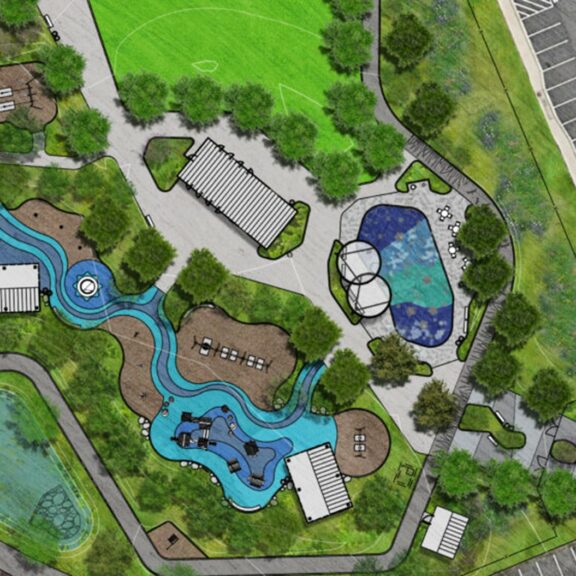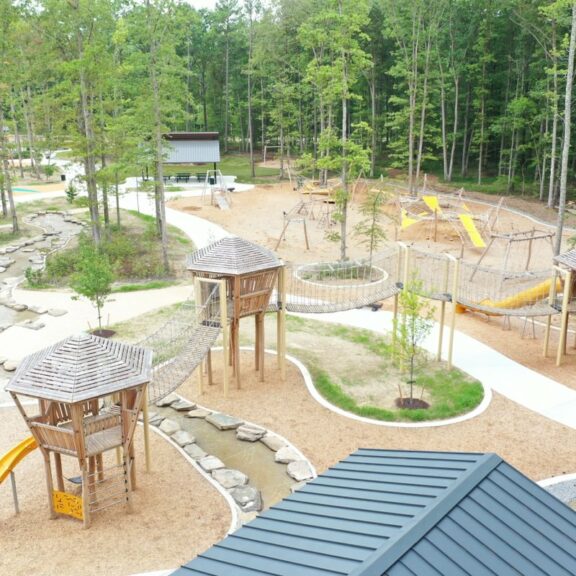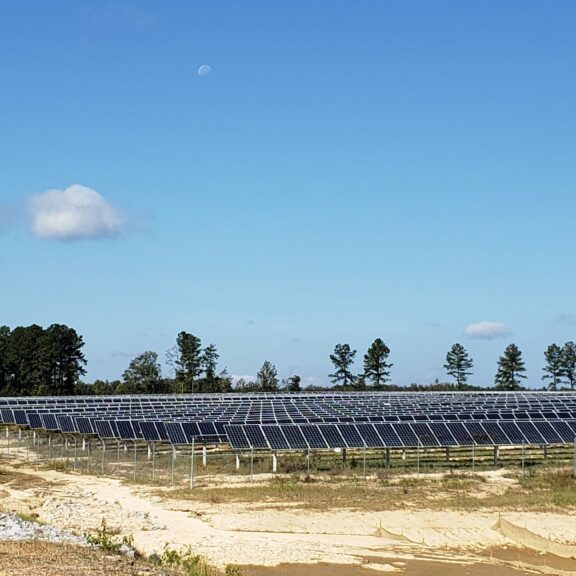Solar energy development is booming these days and is a growing part of our project portfolio in our Dallas, TX, Charlotte, NC, and Richmond, VA offices here at Timmons Group. With an increasing number of projects in the works, many communities are taking a closer look at the land use implications of solar stations, particularly in the rural context where many larger-scale projects are located. Inspired by practices in the United Kingdom, several U.S. states and localities are considering regulations to encourage or require sustainable landscape practices to mitigate the impacts of solar infrastructure. A growing and exciting practice in the industry is the establishment of pollinator-friendly habitat on solar sites, a design solution that reinforces solar energy’s promise for a greener future.
Solar farms (otherwise known as photovoltaic power stations) have conventionally been developed with the photovoltaic panels situated on gravel or turf grass. In non-desert areas, substituting these options with pollinator-friendly landscapes under and around the panels offers a host of environmental and economic benefits for the site and surrounding community, and it may even save money on materials and long-term maintenance. Wildflowers and host plants (particularly native plants) attract pollinator species, which in turn improves pollination and increases crop yields on local farms. These meadow-like plantings, which include deep-rooting grasses, also reduce stormwater runoff and erosion, enhance soil quality, and improve the visual aesthetics of solar infrastructure for neighbors.
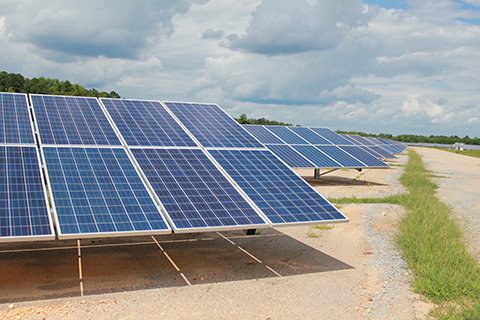
The ecological benefits of this solar development could be improved with a pollinator-friendly landscape. Credit: Timmons Group
Due to many factors, pollinator populations globally are under duress, including here in the U.S. One main reason is the loss of habitat for pollinator species. Conserving and restoring this habitat is crucial not only to pollinators but is integral to our agricultural economy and the health of whole ecosystems. We depend on animals for pollinating some three-quarters of our crops! (See our previous post on supporting pollinator populations here on the INNOVATE blog.)
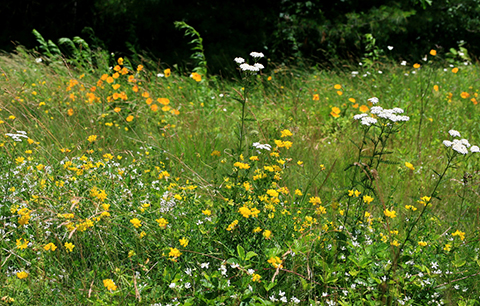
Pollinators are drawn to nectar-rich wildflowers and host plants. Credit: Liz West/Flickr
In the U.S., Minnesota and Maryland have led the way with legislation establishing guidelines and incentive programs for solar developers employing sustainable landscape design and management practices. In Virginia (home to Timmons Group headquarters), Halifax County is the first locality specifically requiring developers to incorporate pollinator-friendly landscape plans. Many other localities are in process of studying their zoning ordinances and considering similar guidelines to capture the benefits of these practices. Timmons Group is following this trend and we’ll share new information here on INNOVATE.
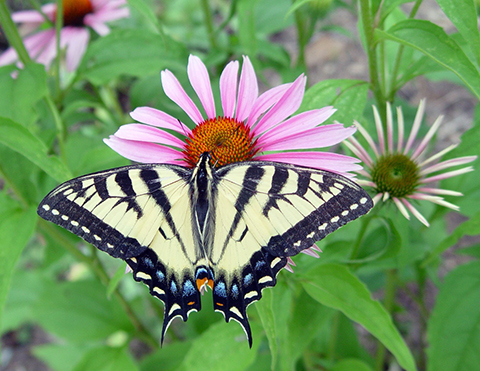
Swallowtail butterfly perched on a coneflower. Credit: U.S. Fish and Wildlife Service/Flickr
Resources and links:
- Minnesota’s Department of Natural Resources has produced Prairie Establishment & Maintenance Technical Guidance for Solar Projects.
- The Virginia Natural Heritage Program at the Department of Conservation and Recreation (DCR) has created a Virginia Solar Site Pollinator/Bird Habitat Scorecard, similar to Minnesota’s, for developers and localities to use in evaluating projects. DCR has also designed a Virginia Solar Site Native Plant Finder to use for appropriate plant selection.
- The N.C. Clean Energy Technology Center hosted a webinar on Pollinator-friendly Solar last fall.

